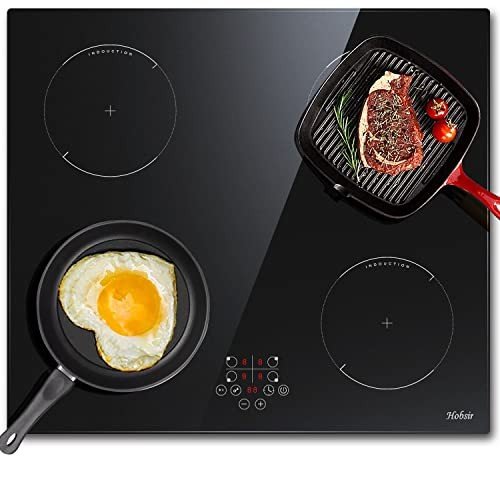Understanding Hobs and Ovens: The Essential Kitchen Appliances
In the realm of kitchen appliances, few products are as necessary as hobs and ovens. These home appliances form the foundation of culinary activities, allowing individuals to produce whatever from simple meals to elaborate feasts. Comprehending the distinctions, types, and performances of hobs and ovens can considerably enhance one's cooking experience. This short article digs into the complexities of hobs and ovens, offering insights that cater to both novice and seasoned cooks.
What Is a Hob?
A hob, often described as a cooktop or stove top, is the flat surface area on which pots and pans are put for cooking. Hobs are equipped with heating components that create the required heat for cooking food. They come in numerous types, including gas, electric, induction, and ceramic alternatives. Each type offers distinct advantages and downsides.
Kinds of Hobs
Gas Hobs:
- Heat Source: Natural gas or lp.
- Benefits: Instant heat control and responsiveness, chosen by lots of chefs for accurate cooking.
- Disadvantages: Requires a gas connection and can be less energy-efficient.
Electric Hobs:
- Heat Source: Electric coils or smooth glass-ceramic surface areas.
- Advantages: Generally simpler to clean up, even heating, and widely offered.
- Downsides: Slower to heat up and cool down compared to gas.
Induction Hobs:
- Heat Source: Electromagnetic currents.
- Benefits: Quick heating, energy-efficient, and only warms the pots and pans, not the surrounding surface area.
- Downsides: Requires suitable pots and pans (ferrous products).
Ceramic Hobs:
- Heat Source: Electric and has a smooth glass surface area.
- Advantages: Sleek look, simple to clean, and even heating.
- Downsides: Can take longer to warm up and cool off.
What Is an Oven?
An oven is an enclosed appliance that cooks food by surrounding it with dry heat. Hobs Sale can be standalone units or integrated with hobs in a single home appliance known as a range. Ovens are flexible tools that can be utilized for baking, roasting, broiling, and more.
Types of Ovens
Conventional Ovens:
- Heat Source: Electric or gas.
- Advantages: Good for traditional baking and roasting.
- Drawbacks: Can have irregular heat distribution.
Convection Ovens:
- Heat Source: Electric or gas with a fan for flowing air.
- Benefits: More even cooking and faster cooking times due to airflow.
- Disadvantages: Can be pricier and might need modifications in cooking times.
Microwave Ovens:
- Heat Source: Microwaves.
- Advantages: Quick cooking and reheating; fantastic for thawing.
- Downsides: Can not brown or crisp food well.
Steam Ovens:
- Heat Source: Steam generation.
- Advantages: Retains nutrients and moisture in food, much healthier cooking option.
- Disadvantages: Longer cooking times and generally greater cost.
Secret Differences Between Hobs and Ovens
While hobs and ovens serve the main purpose of cooking food, their functionalities and utilizes differ considerably. The following table summarizes these essential differences:
| Feature | Hob | Oven |
|---|---|---|
| Cooking Method | Direct heat | Confined heat |
| Primary Use | Boiling, sautéing, frying | Baking, roasting |
| Heat Source | Gas, electric, induction | Gas, electric, steam |
| Cooking Area | Flat surface | Enclosed area |
| Cooking Time | Typically much faster | Varies based on dish |
| Control & & Precision | Immediate and direct | Relies on settings and timers |
Advantages of Using Hobs and Ovens Together
Integrating using a hob and an oven can considerably improve the cooking procedure. Here are some benefits:
- Versatility: Different kinds of food can be cooked all at once.
- Effectiveness: Using both enables various cooking strategies, such as searing on the hob and baking in the oven.
- Time-Saving: Multi-tasking can substantially decrease overall cooking time.
Upkeep and Care
To make sure the durability of hobs and ovens, regular upkeep is vital. Here are some suggestions:
For Hobs:
- Clean spills instantly to prevent staining.
- Usage appropriate cleaners for particular materials (e.g., ceramic cleaner for glass-ceramic hobs).
- Routinely check gas connections for leaks (for gas hobs).
For Ovens:
- Wipe down the interior after each usage to prevent accumulation.
- Use self-cleaning features if readily available, or apply oven cleaners for tough stains.
- Regularly check seals and gaskets for wear and tear (to keep heat effectiveness).
FAQs About Hobs and Ovens
1. What is the best kind of hob for a newbie cook?
Answer: A ceramic or electric hob is frequently suggested for beginners due to ease of use and cleaning.
2. Can I utilize any cookware on an induction hob?
Answer: No, induction hobs need cookware made from magnetic materials (e.g., cast iron or stainless-steel).
3. How typically should I clean my oven?
Answer: It is advisable to clean your oven every few months, or more often if you utilize it typically.
4. Is it better to bake in a convection oven?
Response: Yes, convection ovens are typically better for baking as they provide even heat circulation. However, some delicate dishes may take advantage of traditional ovens.
Understanding the performance and differences in between hobs and ovens is essential for any cooking enthusiast. Whether one chooses the instantaneous heat of a gas hob or the precision of an induction cooktop, each type provides unique advantages. Likewise, ovens vary widely in function, from conventional baking to steam cooking. By valuing Fan Oven Sales in cooking, cooks can enhance their culinary abilities and improve their kitchen activities.

